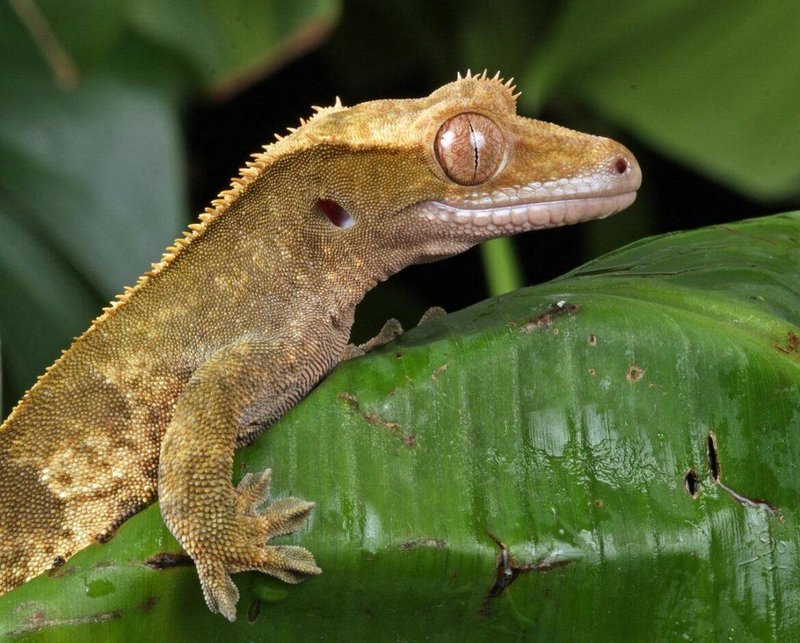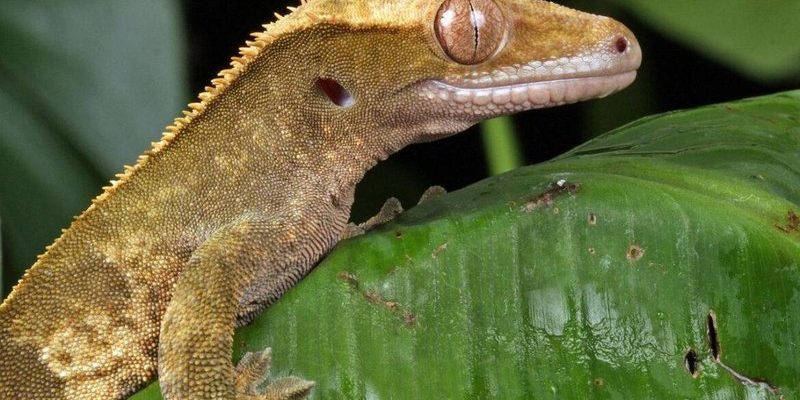
Let’s dive into the diet of the crested gecko, and I’ll explain how it finds its food—trust me; it’s not your average lizard story! These geckos, native to New Caledonia, have a unique set of skills when it comes to feeding. Their diet is a mix of fruits and insects, and they hunt in a way that showcases their special adaptations.
Crested Gecko Diet: The Basics
Crested geckos are known as omnivores, which means they eat both plants and animals. This can surprise some folks! While many reptiles focus heavily on a meat-based diet, these little guys enjoy a good spread of delicious offerings. The main components of their diet include:
- Fruits: Crested geckos love soft fruits like bananas, mangoes, and papayas.
- Insects: They also munch on crickets, mealworms, and other small insects.
- Commercial Diets: Many owners use specialized powdered formulas that mix with water for a balanced meal.
You might be wondering why their diet is so varied. Well, being omnivorous helps crested geckos adapt to their environment. If there’s a fruit shortage or fewer insects, they still have something to munch on!
How Crested Geckos Hunt for Food
Honestly, watching a crested gecko hunt can be a real treat. They don’t chase their prey like some lizards do. Instead, they use a combination of stealth and patience. Here’s how it often works:
1. Ambush Style: Crested geckos tend to wait for their food to come to them. They stay still on branches or leaves, blending in with their surroundings. It’s like they’re playing a game of hide and seek!
2. Using Their Senses: These geckos have excellent vision, especially at night. They’re nocturnal, which means they’re most active when the sun goes down. Their eyes help them spot insects moving around in low light.
3. Quick Strikes: Once they spot a tasty bug, crested geckos can quickly dart out their long, sticky tongues to snatch it up. This method is effective and pretty cool to see in action!
The Role of Fruits in Their Diet
Fruits play a significant role in what crested geckos eat. These soft snacks are not just tasty; they also provide essential nutrients. Fruits can offer hydration, vitamins, and even fiber, which helps keep their digestive systems running smoothly.
When feeding your crested gecko fruits, it’s best to offer them fresh and ripe. Some gecko owners create a mixed fruit bowl to keep things interesting. Just be sure to avoid fruits that are high in sugar or citrusy, as these can upset their stomachs.
Insects and Protein Sources
While fruits are essential, insects are a critical source of protein for crested geckos. Insects provide the energy they need for growth, activity, and overall health. Here’s a closer look at some popular choices:
- Crickets: These little jumping critters are widely used and can be easily found in pet stores.
- Mealworms: Another popular choice, but they should be fed in moderation due to their high-fat content.
- Silkworms: These are a nutritious option and can be a delightful treat for your gecko.
You might be wondering about the best way to feed these insects. Many owners prefer to *gut-load* their insects with nutritious foods before offering them to their geckos. This way, the gecko benefits from the vitamins and minerals stored in the insects’ bodies.
Commercial Diets: Convenience and Nutrition
If you’re new to crested gecko care, you might be relieved to know that there are commercial diets specifically designed for them. These powdered formulas are often fruit-based and come with added vitamins and minerals. Just mix the powder with water, and you’ll have a tasty meal ready!
Using commercial diets can be a convenient option for busy pet owners. Plus, they help ensure your gecko gets a balanced diet, which is crucial for their health. It’s like having a fast-casual restaurant for your lizard!
Feeding Frequency and Portion Sizes
Feeding your crested gecko the right amount is essential for their health. Generally, adult crested geckos should be fed every other day. Juveniles might need food daily, but it’s all about monitoring their weight and activity levels. Here’s a basic guideline:
– Adults: 2-3 tablespoons of food every 2-3 days.
– Juveniles: 1-2 tablespoons of food daily.
Observing how much your gecko eats is key. If they consistently leave food behind, you might be offering too much. On the flip side, if they seem hungry after meals, it may be time to increase portion sizes a bit.
Common Feeding Challenges
While feeding crested geckos can seem straightforward, there are a few challenges you might encounter. Here are some common issues and tips on how to handle them:
– Picky Eaters: Some geckos can be quite selective about their food. Try offering a variety of fruits and insects to see what they prefer.
– Refusal to Eat: If your gecko isn’t eating, check the temperature and humidity of their habitat—these factors can affect their appetite.
– Food Spoilage: Always offer fresh food and remove any uneaten items after 24 hours to prevent spoilage.
Addressing these issues proactively will help keep your crested gecko happy and healthy.
In conclusion, crested geckos have a delightful range of food choices, from fruits to insects and specialized diets. Understanding what they eat and how they hunt can deepen your appreciation for these amazing little reptiles. With the right care, your crested gecko can thrive and lead a healthy life, bringing a bit of the wild right into your home.

